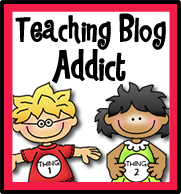The first time I heard the term “Multiple Intelligence” was a few years ago. I was watching a PBS special on an elementary teacher who geared his lessons to meet the needs of all of his students. The teacher was utilizing a theory called multiple intelligence in his lesson plans. Each of the intelligences was successfully applied to every lesson and all of his students were thriving in his class. His belief was for every student to learn, every student must be taught in the way he or she grasped knowledge. The concept was genius and I wondered why every teacher was not leveraging the theory and implementing this information into his or her classrooms.
The PBS special spiked my interest and I began to research the background of Multiple Intelligence Theory. What were the details of this theory and how could it benefit the classroom? Simply stated, the Multiple Intelligence Theory is about how an individual prefers to learn. Howard Gardner created the multiple intelligence model initially for a psychological purpose; however, the theory quickly caught speed in the education field by teachers and administrators. Originally,
Each of the intelligences is directed towards a style of learning. A child who learns through reading may favor learning through the Linguistic Intelligence to grasp information. Another child may retain information through pictures and would lean more towards the Spatial Intelligence. Applying a rap song to a mathematical concept might aid in learning for individuals who lean towards the Musical intelligence theory. The theory of multiple intelligence claims that human beings possess at least seven types of mental functioning or intelligence, therefore, every individual has the ability to use every learning style. However, every individual has one or two styles that work best for him or her when learning.
Why are we not using this approach more in the classrooms? A teacher is responsible for providing information to his or her student in the best manner for that student.
My theory is the teachers who are reaching all of their students needs are utilizing the multiple intelligence theory in the classrooms. Teachers can begin using this tool in their classrooms one-lesson plan at a time. This approach towards implementation will allow a teacher to become gradually comfortable with the tool while not being overwhelmed. A word of advice – try it! What is the worst that can happen?
For More Information...
http://jeffcoweb.jeffco.k12.co.us/high/wotc/confli3.htm




















0 comments:
Post a Comment